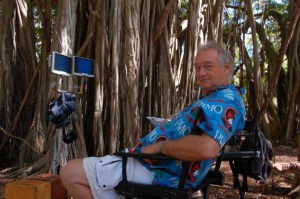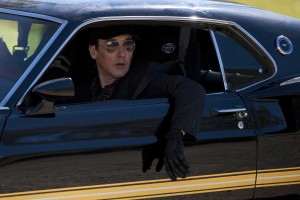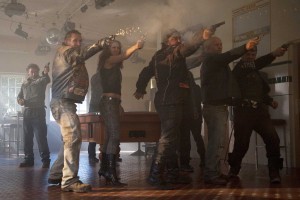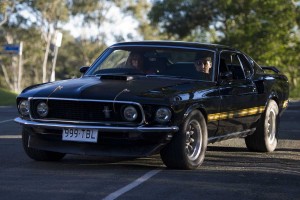
In director Brian Trenchard-Smith’s new film, Drive Hard, starring John Cusack and Thomas Jane, a former race car driver (Jane) is abducted by a mysterious thief (Cusack) and forced to be the wheel-man for a crime that puts them both in danger of being caught by both the cops and the mob. While Trenchard-Smith definitely agrees that this is an action-based comedy that has many quirky and offbeat moments, he believes that this is also the type of “buddy comedy” that audiences have been waiting for. “Thomas and John are both geniuses in my view,” he said. “Cusack is always interesting to watch.”

However, Trenchard-Smith goes on to explain that this international crew culture does not necessarily exist or thrive on its own. The key to having the perfect crew, he says, is to have a firm leadership over the crew in order to develop trust, but to still be able to make the job as enjoyable and entertaining as possible. “If you lead with enthusiasm and respect for everyone, and you seem to be very excited by what you are doing,” he explained, “that will communicate itself to every member of the crew and help them bring their best game [as well].”
Having directed his first 12 films in Australia, this method of building respect and a friendly environment has helped bridge the gap among the various nationalities of his crew members. Along with this, Trenchard-Smith also believes another important part of the director’s job is to make sure that everyone on board feels included and of equal value. If this balance does not exist, neither will the respect.
 “My directorial style hasn’t changed much since 1972,” he stated. “I communicate perhaps more than people need, but it’s making people feel like they are part of the process and less like serfs. I’m not in favor of serfdom. You can have fun and appreciate the inevitable at the same time.”
“My directorial style hasn’t changed much since 1972,” he stated. “I communicate perhaps more than people need, but it’s making people feel like they are part of the process and less like serfs. I’m not in favor of serfdom. You can have fun and appreciate the inevitable at the same time.”
With regards to the directorial style of Drive Hard, figuring out the perfect way to shoot the many intense car chases that the film called for was his greatest challenge. “A good action scene really depends on how the action is covered,” said the director. “You have to have coverage [or else you’ve got nothing].”
For Trenchard-Smith, the most feasible solution to this predicament was deploying multiple GoPros and attaching them to different angles of the vehicles in order to get the most realistic sense of what it was like inside those cars. However, when using such small cameras that are not completely designed for film-quality video, the GoPro footage had to be cut to a minimum in order to mask the quality difference between the GoPros, a Black Magic camera and the RED camera. “I used a GoPro because I knew any other camera would get wet in a puddle shot,” he said. “I also knew the backlight would enhance the shot, giving it the same geographical relativity that was covered in the reaction shots inside the cars. I’m really not wild about shaky cam, [but in this case it felt necessary.] It really draws attention to the artificiality of the process. I love a nice controlled dolly shot. If I could afford it, a Technocrane would be on my sets at all times.”
 Being a veteran in the action-film genre, safety is always Trenchard-Smith’s biggest concern. In this film, however, it was not only the actors who he needed to protect. “I was under strict orders to never damage any of the vehicles,” he said. “I had to stage the stunt of a near miss as opposed to the sum of massive destruction and still keep it as interesting as I could.” This tactic did not fail to disappoint, as the car chases in this film are some of the most cinematically stunning moments.
Being a veteran in the action-film genre, safety is always Trenchard-Smith’s biggest concern. In this film, however, it was not only the actors who he needed to protect. “I was under strict orders to never damage any of the vehicles,” he said. “I had to stage the stunt of a near miss as opposed to the sum of massive destruction and still keep it as interesting as I could.” This tactic did not fail to disappoint, as the car chases in this film are some of the most cinematically stunning moments.
Along with keeping the vehicles intact, keeping the actors together in one piece is also a top concern for action film directors. “You have to be safety conscious and still have a good time,” said Trenchard-Smith. “I’ve done a lot of work with stunt men. My first five pictures were action pictures of one sort or another. I taught myself how to do it on the job, but we didn’t kill anybody or substantially hurt anybody. It was mostly [a challenge] because we didn’t have the technology back then that we do today.”
Drive Hard opens in theaters on Oct. 3.





